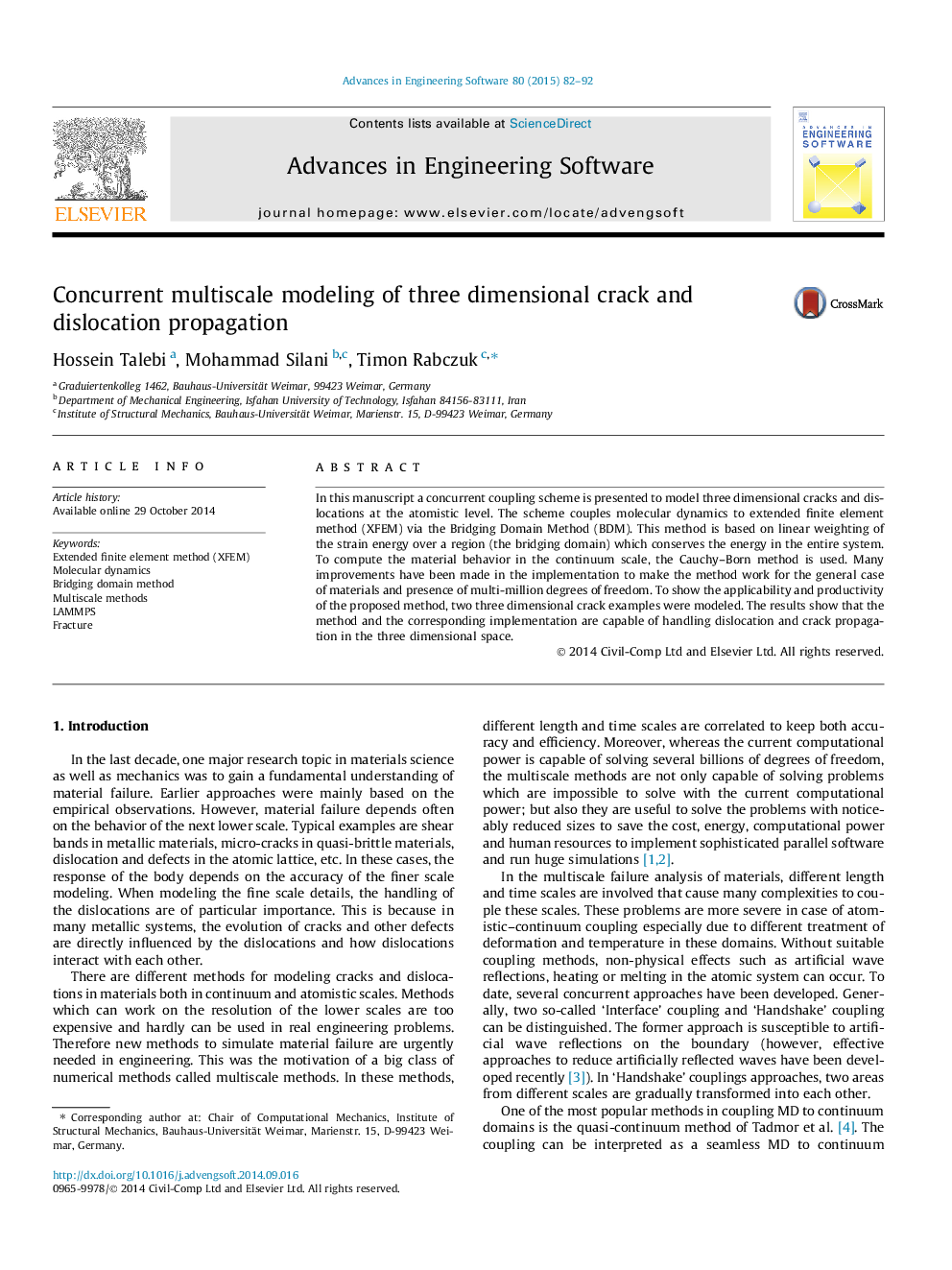| Article ID | Journal | Published Year | Pages | File Type |
|---|---|---|---|---|
| 567230 | Advances in Engineering Software | 2015 | 11 Pages |
In this manuscript a concurrent coupling scheme is presented to model three dimensional cracks and dislocations at the atomistic level. The scheme couples molecular dynamics to extended finite element method (XFEM) via the Bridging Domain Method (BDM). This method is based on linear weighting of the strain energy over a region (the bridging domain) which conserves the energy in the entire system. To compute the material behavior in the continuum scale, the Cauchy–Born method is used. Many improvements have been made in the implementation to make the method work for the general case of materials and presence of multi-million degrees of freedom. To show the applicability and productivity of the proposed method, two three dimensional crack examples were modeled. The results show that the method and the corresponding implementation are capable of handling dislocation and crack propagation in the three dimensional space.
